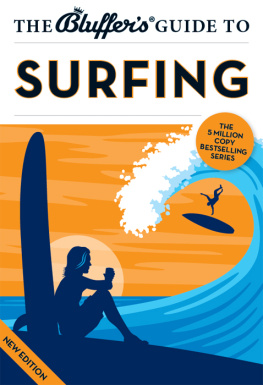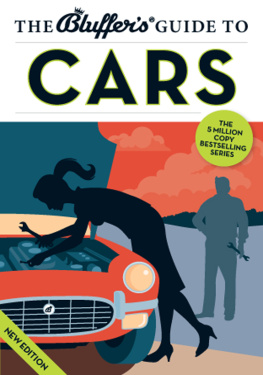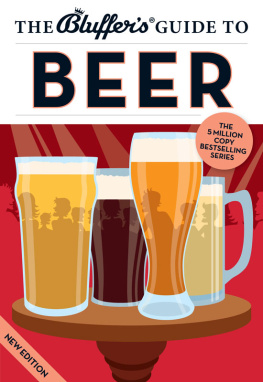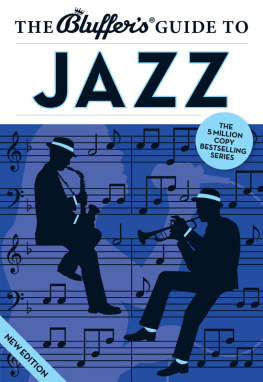

Colette House
52-55 Piccadilly
London W1J 0DX
United Kingdom
Email:
Website: bluffers.com
Twitter: @BluffersGuide
First published 1992
This edition published 2012
Copyright Bluffers 2012
Publisher: Thomas Drewry
Publishing Director: Brooke McDonald
Series Editor: David Allsop
Design and Illustration by Jim Shannon
All rights reserved. No part of this publication may be reproduced, stored in a retrieval system or transmitted in any form or by any means, electronic, mechanical, photocopying, recording or otherwise, without the prior permission of Bluffers.
A CIP Catalogue record for this book is available from the British Library.
Bluffers Guide, Bluffers and Bluff Your Way are registered trademarks.
| ISBN: | 978-1-909365-00-1 (print) |
| 978-1-909365-01-8 (ePub) |
| 978-1-909365-02-5 (Kindle) |

All skiers, irrespective of their age, sex or ability, like to pretend that they are better skiers than they actually are.

S kiing requires a commitment to pleasure of the sort endorsed by hedonists, layabouts, neer-do-wells and philanderers in other words, a single-minded approach to absolute self-indulgence.
Skiers are deeply flawed people, so it will come as no surprise that most of them are also extremely proficient bluffers. All skiers will remember that triumphant moment when they first skied down to a crowded restaurant terrace without falling over. Flushed with pride, they will have puffed up their chests in the fond belief that onlookers were bursting with admiration. In fact, onlookers were doing nothing of the sort, waiting patiently instead for someone else to fall over so that they could point at them and jeer.
But in that brief moment of triumph, the discerning novice will have discovered a profound truth about skiing. All skiers, irrespective of their age, sex or ability, like to pretend that they are better skiers than they actually are. That axiom lies at the root of the sport, and from that root flourishes the most luxuriant verbiage of preposterous declarations about imagined skills and expertise.
This book will offer a few hints and techniques that will allow you to be accepted as a skier of rare ability and experience. But it will do more. It will give you the key to the ultimate bluff: how to impress legions of marvelling listeners with your knowledge and advice without anyone discovering that you cant ski to save your life.
T he British always claim to have invented alpine skiing, a remarkable feat bearing in mind the paucity of Alps in the British Isles. But lets not split hairs. Alpine skiing, the most popular variety of the three main forms of the sport, is that particular discipline that involves skiing downhill. Skiing along on a level gradient is known by those who find it tedious as poling or by those who find it interesting as cross-country or Nordic skiing (possibly invented and, unaccountably, enjoyed hugely by Norwegians).
Uphill skiing is widely described either as ski touring or, by those rash enough to attempt it, as absolutely bloody exhausting.
The British did, in fact, invent alpine skiing but were not the first to spot the potential of binding wooden planks to their feet as a means of transport. That responsibility lies with the Swedes, or possibly the Finns, or possibly the Laps, or the Norwegians, maybe even the Russians. The Mongols and Turks are also keen to state their own case for having invented it. So too are the Chinese. Sinologists will happily produce ancient manuscripts that mention mu-ma literally, men on wooden horses travelling at the speed of a galloping thoroughbred across the Manchurian plains. This suggests that even during the Tang dynasty (618-906 AD), primitive skiers on primitive equipment could happily have seen off the British Olympic downhill team.
The oldest ski in existence was found in a peat bog in Hoting, Sweden, and dates from 2500 BC. Some cave drawings dating from about the same time showing hunters on skis have been found in Rdy, Norway. But it wasnt until the 1820s that skiing came into its own as a sport when the Norwegians began cavorting about in the snow on skis. They loved it. By the middle of the century they were holding cross-country races for gentlemen. Then, in a competition in Oslo in 1868, a farmhand called Sondre Norheim turned up and spoiled everyones fun by winning every race. The secret of his success was a ski he had designed himself, with a waist and a secure binding.
Sondre sank without trace but his invention found its way to the Great Exhibition in Paris in 1889. One interested purchaser was a doctor from Switzerland who took the new skis back to Davos, put them in his attic then forgot about them. A few years later they were discovered by his apprentice, Tobias Branger, and he and his brother became known as the Davos plank-hoppers.
Nobody took them too seriously until Sir Arthur Conan Doyle turned up one day in 1894 and asked to be shown how to plank-hop. The Branger brothers took him over the mountain pass to Arosa and Sir Arthur was smitten. Writing in Strand Magazine a short while later he observed prophetically: I am convinced that the time will come when hundreds of Englishmen will come to Switzerland for the skiing season.
Sure enough, Sir Henry Lunn, inventor of the modern package holiday, arrived in the early 1900s with his newly founded Public Schools Alpine Sports Club and promptly colonised the Swiss Alps with carefully selected members of the British upper classes. The bemused Swiss claimed that they needed a passport to get into their own towns and villages.

Within a few years there was barely a skiable mountain in the Alps that didnt have a train going up it, round it or through it.

The British then insisted their diligent hosts find ways to get them to the top of mountains with the minimum of fuss. They demanded that trains be installed, or else. This is where the Swiss came into their own because, as everyone knows, they like trains a lot. Within a few years there was barely a skiable mountain in the Alps that didnt have a train going up it, round it or through it. Once at the top, the British would get out, put on their skis and hare off to the bottom, making as much noise as possible. Previously, the whole point of skiing had been to get from one point to another and nobody could see the point of going halfway, then coming back, then doing it all over again.
Nevertheless it caught on, albeit as an elitist pastime, practised exclusively by people with nasal voices and no chins. The splendidly egalitarian Swiss soon put a stop to that when Zurich engineer Ernst Constam arrived in Davos in 1934 and invented the cheap-to-install drag lift (see T-bars, page 39) the only form of uphill transport designed with the explicit purpose of jettisoning its passengers without warning. Suddenly the slopes were invaded by the worlds unwashed keen to spend vast amounts of money (something else the Swiss like a lot). The British retired to their mountain hotels grumbling that, yet again, someone had stolen their idea and ruined it.
Next page















